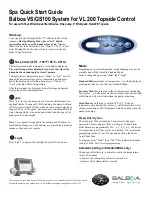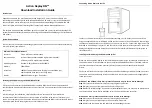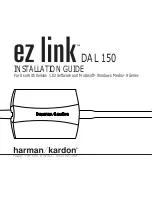
2019/10/07
Operating manual/BEAROMOS 2020/Version 1.0
Page 11 of 26
4
Installation and removal
4.1
Work and preparations to be completed by the customer
Make sure that the sensor housing has a good earth connection, otherwise the sensor will not function
properly. If necessary, you must install an additional earth connection (machine - sensor). The shaft
adaptation must also have good electrical conductivity.
As the principle on which the sensor operates relies on measuring the electrical voltage between the
bearing and shaft, these must be electrically isolated from each other during operation.
Figure 1: Measuring principle of the sensor
4.2
Installing the sensor
No adjustments have to be made to the sensors. The correct COM port of the RS485 adapter that is
used for sensor communication must be set up in the PC software (see 6.1.3 Parameter settings).
•
The user must follow safety rules and regulations.
•
The sensor is installed with a crankshaft adapter.
•
The device is rated to IP56.
•
The M12 plug adapter requires
“
hand-tight
”
torque of approx. 50 cNm.
Do not exceed the maximum permissible temperature during installation. Make sure there
is
sufficient distance from other devices and sources of heat. If cooling is made more difficult, e.g.
because devices with increased surface temperature are next to each other or because the cooling air
flow is obstructed, the allowed ambient temperature is lower.
The sensor circuit cables must be laid as separate control cables. Wires from the engine supply cable
or other main power cables must not be used. Shielded control cables must be used.
When installing and removing, make sure that the sensor is not placed on the shaft journal.
This
can cause initial damage to the inner bellows coupling.
Shaft
Bearing












































